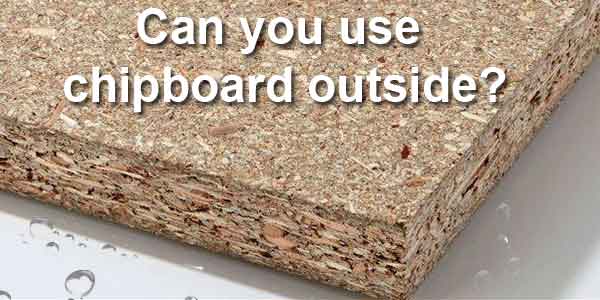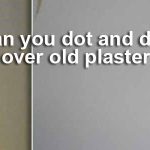Chipboard is an engineered sheet material, it is often used in things like flooring, kitchen worktops, and kitchen units. It is also pretty common in flat pack furniture.
You can buy water resistant chipboard. This is designed to protect against small splashes and increased moisture and humidity. However, the product is only water resistant. It is not waterproof! This means if it is exposed to moisture for long enough, it will deteriorate just like a standard sheet of chipboard.

Due to this, chipboard of any type, is not suitable for outdoor use. Even a water-resistant chipboard will deteriorate if left outside. It would simply take a little longer.
Once the boards get wet, they start to swell. This causes the resin and wood particles in the board to breakdown and separate. At first this will cause the board to swell and warp. Following this, it will lose all of its rigidity and fully deteriorate. Even if the board is dried, it will be extremely weak and break easily.
You could potentially use a moisture resistant board inside, somewhere like a garage, or even a shed as flooring. But even then, it will be subject to higher levels of moisture. This means, whilst it might last for a few years, it will still ruin eventually.
For this reason there are many better types of engineered wood for the job
More suitable sheet wood for outdoor use
There are several reasons you may want to use a sheet material outside. For example:
- Shed roofs
- Planters
- Benches
- Gazeboes
- Outdoor shelving
- Etc
Chipboard is definitely not a good choice for any of these, it will simply deteriorate. However, there are some other options that are much more suitable.
Some of your best options are OSB (oriented strand board) and exterior plywood. Plywood comes in different grades, with marine ply being the highest quality. This is probably your best choice, if you intend to leave it exposed with some type of varnish or sealant.
Lower quality plywood will be just as good outdoors in terms of moisture resistance. However, they will be less aesthetically pleasing. And will be more suitable for projects where they will be covered up. For example, a shed roof covered with felt. Or even something painted. You even have more temporary products, such as shuttering plywood
OSB has very similar strength and durability to plywood. It is also a cheaper product. Based on the finish of the sheet, it is less likely you would want it on display. However, for roofing and flooring it is a great product and you can still use some type of varnish or paint if it is left exposed.
The wood you choose, will depend on what you are using it for. But with these two choices, you can’t go far wrong.
Both types of sheets will hold up very well for years, especially if they are treated further with some form of sealant.
Also, if you are using the wood on some kind of roof or covered area, applying a felt or other surface above the sheeting will give extra protection.
Either of these are a far better choice than chipboard for exterior jobs. Chipboard is simply not designed for exterior use.
Conclusion
Chipboard is not designed for outdoor use. When exposed to water it will deteriorate pretty quickly. Standard boards are highly permeable and will soak up any water they come in contact with.
Even if you are using a water-resistant board, this will simply delay the process. Water resistant boards are not as permeable, but they will still breakdown with prolonged exposure to moisture.
There are far better products for outdoor use, such as oriented strand board and plywood. Both of these are designed for outdoor use and can withstand high levels of moisture.
Finally, the price difference between chipboard and other sheet materials such as ply and OSB is pretty similar. Therefore you really have no reason to even consider chipboard.




